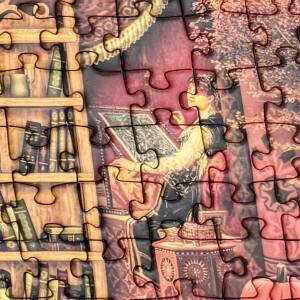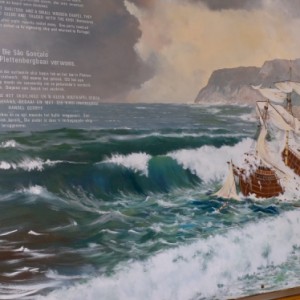The Sāo Gonçalo
This is Robberg Beach, with the rocky Robberg Nature Reserve peninsula in the background. It is the quietest of the beaches in Plettenberg Bay and we tend to think of it as ‘ours’, as it is just a few minutes from where we stay.
But it is not always as peaceful as it looks here.
In 1630 a large ship, the Sāo Gonçalo, carrying a precious cargo of spices from India to Portugal anchored here whilst some repairs were carried out. Before the repairs could be completed, a huge storm hit the bay and the ship sank. Tragically 150 sailors drowned, but 100 managed to swim ashore. This group lived on the beach, and the land behind the dunes, for eight months, during which they built houses and a church and traded with the local people. This was the first recorded European habitation in South Africa.
Eventually they set out in two boats they had built and left behind a ‘padrao’, or stone, as a reminder of the original shipwreck. This stone was found in 1980 and has been set up as a memorial just by the beach – it reads in Portuguese ‘Here was lost the ship Sāo Gonçalo in the year 1630’ (see extra 1)
We looked for the stone yesterday, but failed to find it, then Gordon found it whilst out running (and was told about it by some local people). I went to see it today. Then we decided to complete the story by finding the Plett Municipal Offices (that took some doing), where we had read that there were relics from the shipwreck. Sure enough, we were shown to some display cases with all sorts of relics from the ship and the encampment. Most interesting were the pieces of Chinese Ming porcelain (see extra 2) which had survived being immersed in sea and sand. There was also a painting depicting the event (see extra 3).
Sadly we leave Plett tomorrow and move on, but it is on to another adventure.




Comments
Sign in or get an account to comment.


